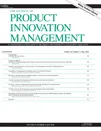R&D collaboration facilitates the pooling of complementary skills, learning from the partner as well as the sharing of risks and costs. Research therefore stresses the positive relationship between collaborative R&D and innovation performance. Fewer studies address the potential drawbacks of collaborative R&D. Collaborative R&D comes at the cost of coordination and monitoring, requires knowledge disclosure, and involves the risk of opportunistic behavior by the partners. Thus, while for lower collaboration intensities the net gains can be high, costs may start to outweigh benefits if firms perform a higher share of their innovation projects collaboratively. For a sample of 2735 firms located in Germany and active in a broad range of manufacturing and service sectors, this study finds that increasing the share of collaborative R&D projects in total R&D projects is associated with a higher probability of product innovation and with a higher market success of new products. While this confirms previous findings on the gains for innovation performance, the results also show that collaboration has decreasing and even negative returns on product innovation if its intensity increases above a certain threshold. Thus, the relationship between collaboration intensity and innovation follows an inverted-U shape and, on average, costs start to outweigh benefits if a firm pursues more than about two-thirds of its R&D projects in collaboration. This result is robust to conditioning market success to the introduction of new products and to accounting for the selection into collaborating. This threshold is, however, contingent on firm characteristics. Smaller and younger as well as resource-constrained firms benefit from relatively higher collaboration intensities. For firms with higher collaboration complexities in terms of different partners and different stages of the R&D process at which collaboration takes place, returns start to decrease already at lower collaboration intensities.
Aktuelles
Forschung zu gemeinschaftlicher Forschung und Entwicklung von Unternehmen erscheint in „Journal of Product Innovation Management“
Publikationen |

